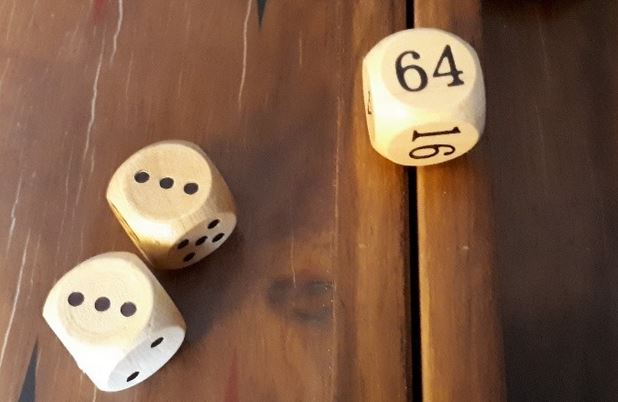Last updated on April 28, 2024
There are multiple strategies that can be applied in backgammon. Each strategy has its basic concepts and strengths. In a normal game of backgammon, it is quite likely that you will switch strategies multiple times. If you are interested in improving your backgammon, then you should learn the fundamental strategies used in this game. Perhaps, the simplest backgammon strategy is the running game. Essentially, backgammon is a racing game with the winner being the first to bear off all of their checkers. The running game strategy is all about the race.
The running game just simply involves clearing your checkers as quickly as possible. There is no concern for defensive or offensive plays. A running game can be adopted after a series of high rolls early in the game, which puts a player a long way ahead in the pip count. Alternatively, the running game can be forced upon both players when contact is broken. A running game is the only type of game where the dice have a decisive say in the outcome. The player rolling the higher numbers (provided they make no movement errors) is normally the winner.
Key decisions
There are several key decisions that need to be made when using the running game strategy. The first is to decide when to use the strategy. Usually, this would happen after a strong opening, such as the Lover’s Leap (6-5). This roll followed by a double would probably push the player far enough ahead in the pip count to adopt the running game strategy.
Understanding the pip count is crucial before executing this strategy. By pip count, we mean the number of points the checkers need to travel to get home. The number of checkers you have and their distance from the home board determines this. At the start of the game, both sides have a pip count of 167. It is best to execute a running game when you are well ahead of your opponent in the pip count. This means your checkers are closer to home than your opponent’s.
The rule of 8 can also be applied to tactical decisions if you know the pip count. This is a method that considers a position based on which side is ahead on the number of ‘average rolls’.
Contact
Another factor that needs to be checked before executing a running game is the likely contact with enemy checkers. Check the position of your checkers. Beware, if there are several blots in your position in line for direct hits (6 or less). In this instance, you may opt to get your checkers in a stronger position before executing this strategy.
A pure running game will occur when there is no longer any contact between your checkers and your opponent’s checkers. This is the moment when you are hoping to make big rolls. Hopefully, some large doubles will allow you to bring all of your checkers into your home board and bear off. If your opponent has fewer pips remaining than you, choosing a running game is a poor strategy. There will be little chance of success unless the dice roll in your favour.
Doubling
Running games will not always end with one player bearing off all of their checkers. The more important elements of a running game are knowing the right time to double and knowing whether to take or pass when offered a double. As the fortunes of the dice change, running games can be doubled and redoubled.
To know when to double or whether to pass or take, you should learn how to do a pip count. You should also be able to adjust your pip count for any wastage that may come along. Never initiate a running game when you are behind in the pip count. When you’re behind in the race you have to try and hit your opponent to improve your winning chances. Running away will reduce contact with your opponent’s checkers, therefore making it very difficult for you to hit him. Instead, consider a holding or back game strategy.
When to double
Answering the question of when it’s time to double in a running game will depend on a number of things. This includes the state of the match or the style of play of the opponent. If you need to win by two or more points, you will have to take a risk and double with a narrow lead. If the opponent is a gambler then the offer can be made with a bigger lead.
The running game isn’t really all about running your checkers. A lot of it has to do with knowing when to double, when to take, and when to pass. Understanding these important elements is part of winning backgammon using the running game strategy.
Related content
Backgammon running game video from MonkeySee



This is the easiest backgammon strategy to learn, you just run. However, it takes experience to know when to apply this backgammon strategy. If you have a lead in the race and you can break contact, then the running game should be the strategy you adopt. If you don’t have a lead, then it is almost certainly a lost cause. The best thing backgammon beginners can do is learn the five basic strategies of backgammon: running, holding, back game, blitz and priming. To become a good backgammon player you need to understand these strategies and have the flexibility to apply them. It is also necessary for backgammon beginners to understand that your strategy can change multiple times throughout a single game.